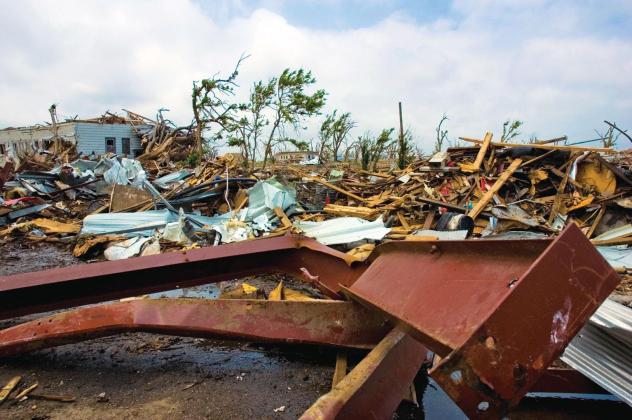
David Jacobs/ The Center Square
Pending changes to federal law could save Louisiana more than $1 billion for a hurricane protection system that has been promised since Hurricane Katrina but not delivered.
The federal government authorized a hurricane storm damage and risk reduction system for the greater New Orleans area after Katrina slammed the region in 2005, explained Chip Kline, who chairs Louisiana’s Coastal Protection and Restoration Authority. The feds were to pay the full cost to upgrade portions of the system that failed during the storm and projects that had been authorized since 1965 but never built.
Officials also authorized additional construction that would provide what’s known as a 100-year level of protection, which means it would have an estimated 1 percent chance to be overtopped in a given year. The state agreed to pay 35 percent of the cost of that project in installments over 30 years.
Louisiana’s first payment isn’t due until the U.S. Army Corps of Engineers finishes the project and turns it over to state officials, which still has not happened; the original 2010 deadline has been pushed back to next year. Meanwhile, some $600 million in interest has accrued.
“We are not in control of construction of this thing,” Kline said. “It doesn’t seem really fair to us to hold us accountable for over $600 million in interest because of delays by the federal government.”
Over 30 years, taxpayers could be on the hook for interest payments that easily exceed the estimated principal cost of $1.1 billion. In hopes of renegotiating the interest obligation, state officials held “many, many meetings” with Obama and Trump administration officials only to learn neither the Corps nor the Office of Management and Budget has the authority to do so.
A provision in the 2020 Water Resources Development Act, which passed the U.S. House of Representatives last week, would provide that authority. The Senate version, which has not yet come to the floor for a vote, includes similar language.
The bill also calls for giving Louisiana credit for completing projects that could help protect the federal investment when the next hurricane hits and counting the cost of those projects against the money the state owes, Kline said.
Gov. John Bel Edwards is committed to issuing bonds to pay off the $1.1 billion principal, Kline said, but the administration does not want the state to pay interest on it for 30 years.
“The federal government should not be in the business of making money off the citizens they’re supposed to be protecting from flood and hurricanes,” Kline said.
The opportunity to renegotiate the debt and the credit provision both were flagged by the Congressional Budget Office for their potential cost and impact on the federal deficit.
“They raised concerns about two provisions [in the WRDA] and both of them are ours,” said Congressman Garret Graves, a Baton Rouge Republican who worked to get the language into the House version of the bill. “It’s somewhat concerning to have that kind of attention.”
Federal lawmakers typically approve a new WRDA every two years, and it always contains projects considered important to Louisiana. But these two provisions are more important to the state than everything else in the bill combined, Graves said.
“This is not just getting the state of the hook,” he said. “This is an explicit commitment from the state that they would reinvest the savings back into our coast and our vulnerable communities in south Louisiana.”
In so doing, the state not only would help protect the federal investment, it would be more resilient the next time a major storm hits, reducing the need for federal disaster aid, Graves added.
The congressman highlighted another aspect of the WRDA that could benefit Louisiana. Under current law, the Corps, which does not issue grants, is required to be the lead agency for projects under its purview.
While the Corps has world-class expertise in many areas, its leadership doesn’t always know what’s best for south Louisiana’s unique and fragile coastal region and its bureaucracy can slow projects down considerably, Graves said. Letting the state CPRA or local authorities take the lead might save time and money.
“Let’s figure out how to put our team together in a way that’s going to deliver the best project as fast as we can and as inexpensively as we can,” Graves said. “[The change] has the potential to revolutionize how these projects are delivered.”
While some career people at the Corps are resistant, perhaps in part because they want to protect their bureaucratic turf or don’t want to be “shown up” by a state agency completing projects faster and cheaper than they do, current political leaders are open to the change, he said.
“I think competition is good,” Graves said. “Ultimately, it’s going to yield a better outcome for taxpayers.”
